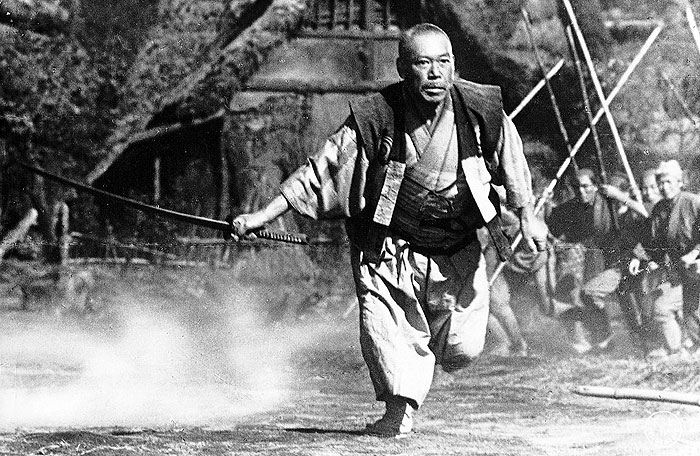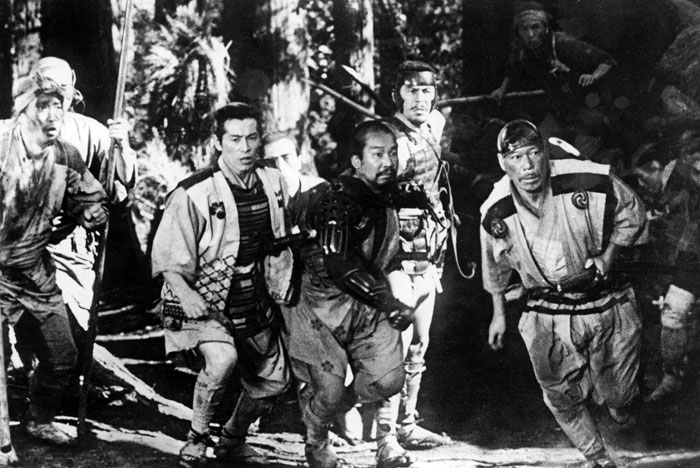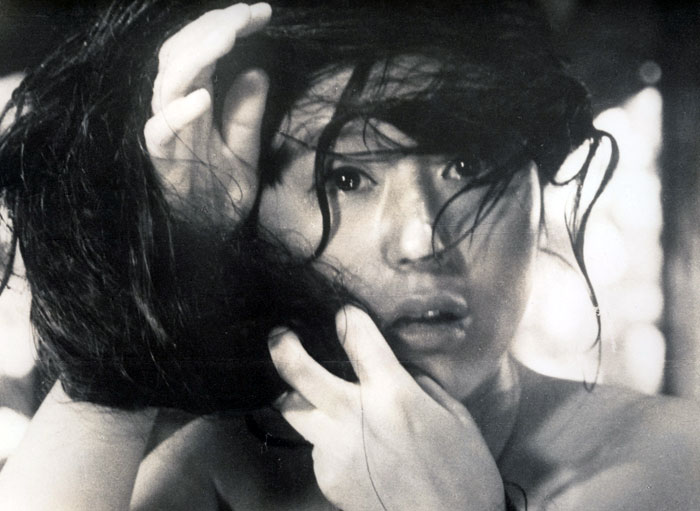Shichinin no samurai
| Year | 1954 |
|---|---|
| Country | Japan |
| Tagline | The Mighty Warriors Who Became the Seven National Heroes of a Small Town |
| Director | Akira Kurosawa |
| Cinematography | Asakazu Nakai |
| Scriptwriters | Akira KurosawaShinobu HashimotoHideo Oguni |
| Produced | Sôjirô Motoki |
| Music | Fumio Hayasaka |
| Art Direction | Takashi MatsuyamaSô MatsuyamaKôhei Ezaki |
| Editing | Akira Kurosawa |
| Genres | DramaAdventure |
| USA Gross | $271 841сборы |
| Release Date | April 26, 1954 |
| MPAA | N |
| Runtime | 207 min. |
Plot Summary
Did You Know?
Actor Seiji, Megumi, who played master sword, Kyuzo actually never owned fencing.
Studio Toho tried several times to stop filming because of the General opinion it was a total financial failure, but the Director always went beyond the allotted budget. Each time Kurosawa had persistent persuasion to convince the producers to resume funding.
Shooting the final battle several times had to stop due to the fact that not enough horses.
In one scene of the film there is a moment that allows you to set the exact date of the events. In a stolen birth certificate Kikuta says he was born in the second year of the period of Tense, which corresponds to 1574, and Cambay concludes that, therefore, Kikuta now only 13 years old. Given the nature of counting age in Japan (the newborn child is considered to be annual), the events of "the Seven samurai" takes place in 1586.
The film came largely because Akira Kurosawa really wanted to try the popular Japanese genre of "jidaigeki" (historical film about the fighting adventures of the samurai), and to do it at the same time and deep in meaning, and fascinating in form. He initially intended to make a film-parable about a day in the life of a samurai, to trace all the actions of the hero until the evening, when the character was supposed to commit ritual suicide. In the end, Kurosawa did not dare to take on such a material, considering that not well knows the nuances. However, in the course of working on this story he came across the case when the village belonged to one of the dead lords, hired some ronin for protection from bandits (strictly speaking, the same ronin), and decided to put the film.
The film won first place in the Empire magazine list of "100 best films of world cinema" compiled in 2010.
It is believed that in the movie "Seven samurai" for the first time introduced such an element of adventure drama, as teams of people, each of them is gifted. Subsequently, this narrative technique is often used.
In 1960 came the American remake of "Seven samurai" movie "the Magnificent seven". The action in it was moved to the Wild West, where cowboys seven-shooters to protect from bandits Mexican village. Akira Kurosawa believed this remake is quite faithful to the original (taking into account different cultural traditions of Japan and the United States). Subsequently, there was also a few remakes, much less significant and artistically wealthy (e.g., "the Magnificent seven Gladiator" (1983), "Battle beyond the stars" (1980)). There is the anime "samurai 7" (2004), in which the plot, the names and characters of the main characters repeat the Kurosawa movie, but the action moved to the future. 17 episode of season 2 of the animated series "Star wars: clone Wars" (2008) is dedicated to Akira Kurosawa. The plot of this episode lies the same story, but the action takes place on one of the planets in the fictional universe. Before the beginning of the series appears a caption with a dedication to the memory of Akira Kurosawa.
In 1981, a Studio them. Gorky was released the film "the Sixth", which in the first years after the civil war, in a provincial town the young Soviet militia into a battle with bandits.
The role of Kikuta has become a favorite for actor Toshiro Mifune, who all his life remembered every word of his hero.
All of the firearms in the film is absolutely historically: it's the ancient Japanese Tanegashima musket.
In the film "28 Panfilov" characters retell the plot of "Seven samurai" and "Magnificent seven" as a story.
The film was first in the works of Kurosawa, there is a juxtaposition of traditional samurai bladed weapons and firearms, which is perceived as incompatible with military honour. Guns in the film, there are only bandits, samurai warriors makes a shot from the gun only "necessary" Kikuta, and only once. Subsequently, in other Kurosawa's films, this motif was reinforced and underlined for example, in the movie "the Bodyguard" (1961), and culminated in the film "Kagemusha: Shadow warrior" (1980).
Plot the plot of "Seven samurai" was used in many movies. Even the plot of the animated film "a bug" (1998) Pixar's in the first half of the film almost completely copies of "Seven samurai". The role of the peasants are the ants in the role of gangsters locust. In one episode, was almost literally cited an episode from "the Seven samurai", namely the moment when the grieving peasants understand that even if their village to buy off bandits, its people still starve to death.







